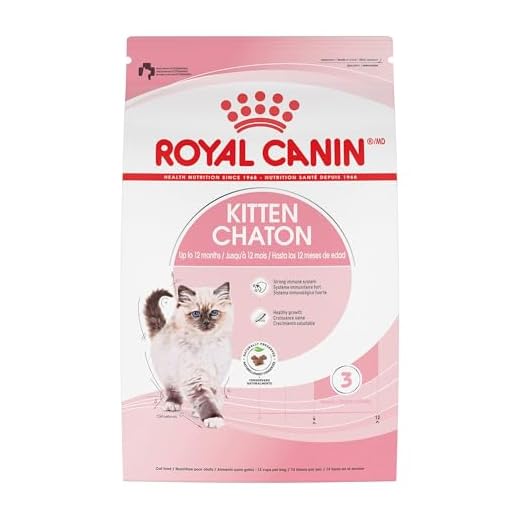



As an 8-year-old Scottish Fold, I can confidently say that the transition from youthful exuberance to mature demeanor typically occurs around the age of one year. This is when physical growth slows down significantly, and behaviors begin to stabilize. By this point, many of us have traded in our relentless play for a more composed lifestyle.
During the initial stages of life, we are characterized by endless curiosity and energy. However, by the time we reach the 12-month mark, our personalities start to solidify. I can attest that this is a phase where we often become more independent and discerning in our interactions with humans and other animals.
It’s also worth noting that while some might retain playful habits beyond the first year, the majority start to exhibit a more relaxed attitude towards life. This is the moment when our social structures and preferences become evident, shaping how we engage with our surroundings. Understanding these milestones can help you appreciate the evolving nature of our lives.
Understanding the Kitten Development Stages
From birth to about four months, little ones undergo rapid growth. This period is crucial for socialization. They learn to interact with their siblings and humans, developing essential skills. At this stage, exposure to different environments and experiences helps shape their personalities.
Between four to six months, they enter a playful phase. Curiosity peaks, and they start exploring their surroundings more independently. It’s a prime time for training, as they are eager to learn and absorb new information. Positive reinforcement works wonders during this period.
By six to twelve months, they transition into adolescence. This phase can come with behavioral changes as they test boundaries. It’s important to establish a routine and set clear expectations. Neutering or spaying is often recommended during this time, as it can influence behavior and health.
After one year, a noticeable shift occurs. They begin to settle into their adult personalities. While still playful, maturity brings a calmer demeanor. This is also when their physical growth plateaus, and they reach their full size. Regular veterinary check-ups become essential to monitor health and weight.
Two to three years of age marks the shift into adulthood. They exhibit confidence and independence, often forming stronger bonds with their humans. This stage is characterized by a stable temperament and defined personality traits. Engaging in mental and physical activities remains key to their happiness.
Understanding these stages helps in providing the right environment and support, ensuring a smooth transition from playful youth to a mature companion.
Physical Growth Milestones in Kittens
By the time they reach eight weeks, the little ones typically weigh around two pounds and have started to develop their adult teeth. This is when they begin exploring their surroundings with more confidence, showcasing their playful nature. It’s also a critical period for socialization, as they learn to interact with their littermates and humans.
At approximately three months, their weight can increase to about four pounds. By this stage, they exhibit more defined personalities, and their coordination improves significantly. They become agile, demonstrating their ability to jump and climb, which is crucial for their development.
At six months, they often weigh between six to eight pounds. This phase marks the onset of adolescence. Physical changes become noticeable, such as the elongation of their bodies and the development of more pronounced facial features. It’s also a time when they might start to show interest in mating behaviors.
By the time they hit one year, most have reached their full size, typically weighing between eight to twelve pounds. Their growth slows significantly, and they transition into adulthood. This milestone is essential as it signifies that their bodies are now fully developed, and they can take on a more independent lifestyle.
Behavioral Changes as Felines Mature
As I grow older, my playful antics start to mellow. The wild chases and boisterous pouncing gradually turn into more measured behaviors. This transition usually occurs around six months to a year of age. Here are some specific changes I’ve noticed:
- Social Interactions: Younger companions often engage in rough play. As I mature, I prefer more gentle interactions, seeking companionship without the chaos.
- Territorial Behavior: Initially, I may explore every nook and cranny. In time, I establish my territory, becoming more selective about my surroundings and showing signs of protectiveness.
- Hunting Instincts: The instinct to chase and hunt prey remains, but the intensity decreases. I find satisfaction in watching rather than participating in every chase.
- Vocalization: My meows become less frequent. While I still communicate, it’s often more about expressing needs rather than playful chatter.
- Grooming Habits: I take grooming more seriously, spending more time keeping my coat pristine. A clean appearance becomes a priority as I adopt a more refined demeanor.
As I embrace my mature self, it’s important to maintain health. Regular check-ups and preventive care, like a good dewormer for outdoor cats, ensure I stay in top shape for my new lifestyle.
Timeline of Nutritional Needs from Kitten to Adult
At 4 weeks, transitioning to solid food begins. A high-quality kitten formula is introduced, providing necessary proteins and fats for growth. Soft, moist food is preferred to ease the shift from milk.
By 8 weeks, a balanced diet with high protein content is essential. Kittens require about 30-35% protein and 20% fat to support their rapid development. Wet and dry food can be mixed, ensuring hydration and variety.
At 12 weeks, solid food intake should be well established. Offering a mix of dry and wet food helps to maintain dental health while satisfying hydration needs. Regular feeding schedules become important, ideally three to four meals a day.
By 6 months, the growth rate stabilizes. A diet shift to a growth formula continues, but the frequency of meals can decrease to two to three times daily. Nutritional needs remain high, with a focus on proteins and fats.
At 12 months, the transition to adult food begins. A balanced adult diet with about 25% protein and 15% fat is appropriate. Gradually mix adult food into the kitten formula over a week to avoid digestive issues.
Throughout this timeline, always monitor weight and health. Adjustments may be necessary based on activity levels and individual health. Consultation with a veterinarian ensures the best dietary choices for optimal health.
Health Care Considerations During the Transition
Routine veterinary check-ups are critical as a young feline matures. Schedule visits at least once a year to monitor health and vaccinations.
Vaccination Schedule
- Initial vaccinations should be completed by 16 weeks.
- Booster shots are necessary at 1 year and then every 3 years for certain vaccines.
Spaying or Neutering
- Consider spaying or neutering around 5-6 months to prevent unwanted litters.
- Consult your vet for the optimal timing based on growth and health.
Dental health needs attention too; start brushing teeth early to establish a routine. Regular dental check-ups can prevent issues down the line.
Nutrition should align with physical growth. Transition from kitten food to adult formulas gradually, considering specific dietary needs based on health conditions.
Keep an eye on weight; obesity can lead to serious health problems. Use feeding guidelines as a baseline and adjust based on activity levels.
Socialization is essential during this stage. Engage in play and introduce new environments to build confidence and reduce stress.
Monitor behavior changes closely. Sudden shifts might indicate health issues, so consult a pet professional if anything seems off.
Finally, ensure your living space is safe and stimulating. Provide scratching posts, toys, and cozy spots to encourage physical and mental well-being.
How Spaying or Neutering Affects Kitten Growth
Spaying or neutering significantly influences physical and behavioral development during the early stages of life. It is generally recommended to perform this procedure around six months of age, which coincides with a crucial growth period. This intervention can lead to changes in growth patterns and overall health.
Research indicates that altering can result in a reduction of growth spurts, leading to smaller adult sizes compared to those who remain intact. This is primarily due to the hormonal changes that occur post-surgery, affecting bone growth and density.
In addition to physical changes, spaying or neutering often leads to behavioral modifications. Many of us experience reduced roaming tendencies and a decrease in certain aggressive behaviors. These changes can create a calmer environment, making the transition to adulthood smoother.
It’s important to monitor the nutritional intake after the procedure. Altered pets may require adjustments in their diet to maintain a healthy weight. Overfeeding can lead to obesity, which is a common issue among altered individuals.
Check-ups with a veterinarian become critical during this transition phase. Regular health assessments ensure that any potential issues arising from hormonal changes are addressed promptly. Maintaining a balanced diet and regular exercise will help in achieving optimal growth and health.
If you own other pets, consider providing comfortable spaces for them, like the best absorbent doormat for dogs, to minimize stress and ensure a harmonious household.
| Age (Months) | Spaying/Neutering Effects | Recommended Actions |
|---|---|---|
| 0-6 | Rapid growth, high energy | Balanced diet, regular playtime |
| 6-12 | Procedure recommended | Consult vet, adjust diet |
| 12+ | Stabilized growth, behavioral changes | Monitor weight, continue vet visits |











